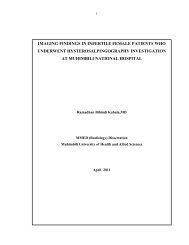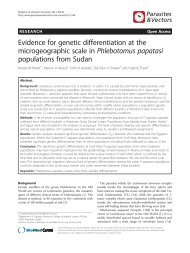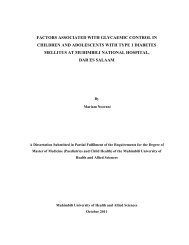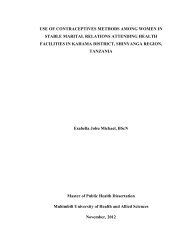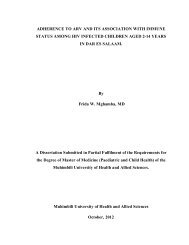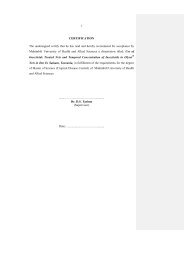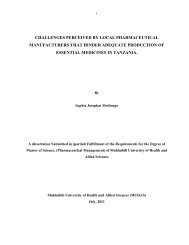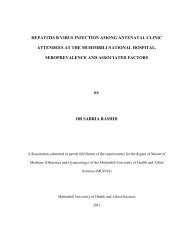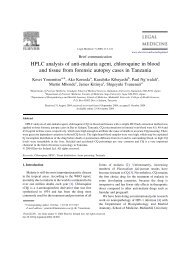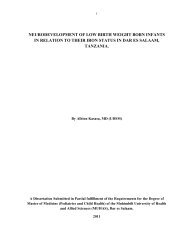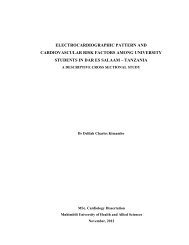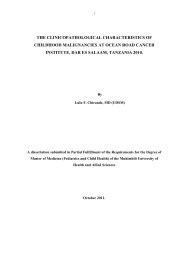MUNISI DISSERTATION REPORT FINAL[1].pdf - muhas
MUNISI DISSERTATION REPORT FINAL[1].pdf - muhas
MUNISI DISSERTATION REPORT FINAL[1].pdf - muhas
Create successful ePaper yourself
Turn your PDF publications into a flip-book with our unique Google optimized e-Paper software.
4<br />
1.1. STATEMENT OF THE PROBLEM<br />
Poverty and inadequate water supplies and sanitation are important determinants of<br />
transmission of STH infections. In such conditions, soil-transmitted helminths species are<br />
commonly co-endemic (Bethony et al., 2006, WHO, 2002).In Same district 734 out of 29360<br />
households have no toilets. This constitutes 2.5 percent of the total households in the district.<br />
The percentage of households without toilet facility in Same district is above the average of<br />
the region. The most common source of drinking water is from unprotected wells (The united<br />
Republic of Tanzania, 2002).These conditions suggests that STH are endemic in Same district.<br />
Periodic treatment of the endemic population with a broad spectrum anti-helminthic drug has<br />
been advocated as a cheap and effective mean of reducing the worm burden and its related<br />
morbidity (Andrade et al., 2001). NSSCP implemented the first round of school deworming<br />
campaign in Kilimanjaro Region including Same district in August 2008 (SCI, 2009), the<br />
second round is scheduled in the fifth phase of the NTDCP which is yet to be done. It is also<br />
known that an important factor in STH treatment is reinfection, where rates of STH infection<br />
has been observed to reach between 44% to 80% of pretreatment rates, within a period of less<br />
than 36 months depending on the parasite species (Bethony et al, 2006). However since the<br />
last mass chemotherapy against STH in the district, no survey has been done to determine the<br />
prevalence and intensity of STH. As WHO recommends a baseline survey in school children<br />
to determine the prevalence and intensity of infections (Montresor et al., 1998) as<br />
governments need to target treatment appropriately, based on reliable and up-to-date<br />
information on the geographical distribution of infection (Pullan et al., 2011).<br />
It has also been reported that in many tropical regions, anaemia, iron deficiency, malaria and<br />
multiple helminths (most importantly Geohelminths and Schistosomes) infections coexist and<br />
are interrelated (Stoltzfus et al,2000). There are limited information in Same district regarding<br />
the coexistance of soil-transmitted helminths, malnutrition and anaemia.


![MUNISI DISSERTATION REPORT FINAL[1].pdf - muhas](https://img.yumpu.com/30272764/16/500x640/munisi-dissertation-report-final1pdf-muhas.jpg)
